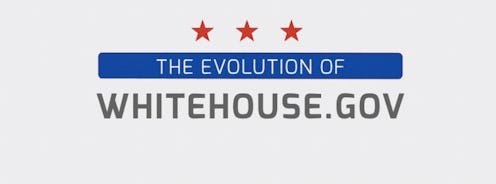News
WhiteHouse.gov Looked Pretty Funny In 1997

The White House launched its first website, WhiteHouse.gov, during President Bill Clinton's first term. It will remind you of dial-up Internet and when people actually spelled email as "E-mail." It's a simplistic, hilarious sight, but we have moved on to more complex, animated, and user-friendly web design — thank goodness. The evolution of the White House website over time is being highlighted in a new project by Udemy, which offers courses in web design.
The early White House website was rudimentary and plain. Like most websites of the early '90s, it featured a single-column design, a lot of text, and minimal use of graphics. Not very good for people who are easily distracted. But then, according to Udemy, websites tried to cater to those people with poor attention spans, by making websites overly flashy, colorful, and busy. Think of those websites you used for middle school projects that featured black backgrounds and neon text and random photos of President Abraham Lincoln that flashed across the screen periodically. Thankfully, websites of the early 2000s became more organized and user-focused with drop down menus and links to social media websites like Myspace. (OMG, Myspace.) In the late 2000s, things became ultra minimal again. Many of them had mobile optimization and cool details like unique fonts. WhiteHouse.gov evolved in a way indicative of widespread changes in web design.
Last October, the White House Historical Association shared a photo of one of the White House's first websites. It was grainy, it featured a welcome message from the president, and it actually described what it was to users: "An Interactive Citizens' Handbook."
The photo is from 1995, when only 10 percent of people in the U.S. had access to the Internet, according to the association. Despite that, the Internet was taking off: The association said the number of visitors to the White House website more than tripled each year of the Clinton administration. WhiteHouse.gov was one of the first "real," fully functioning websites that college students could visit. CNN news anchor Miles O'Brien described the website in a hilarious way when it first came out, according to The Washington Post:
For those of you brave enough to spend time sitting in front of electronic devices, there's a new place to check out on the cyber scene.
The cyber scene! Unfortunately, the Post said the welcome message from the president didn't actually click through to anything, but if you clicked around there is a welcome message from Al Gore, where he actually says, "Hi. Welcome to my internet home page." LOL. The White House has always been up on the times. Most recently, they finally gave President Barack Obama access to his own Twitter account, which now has 2.4 million followers.
Images: Getty Images; Carly Steele Johnson/Udemy